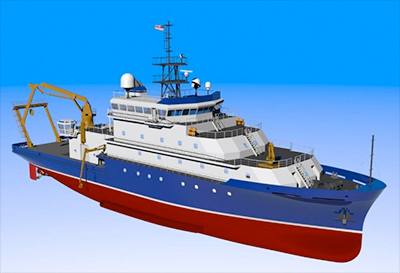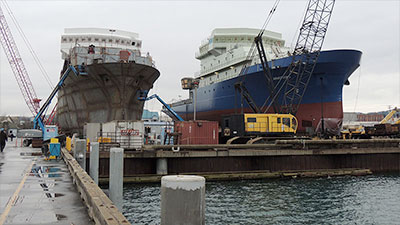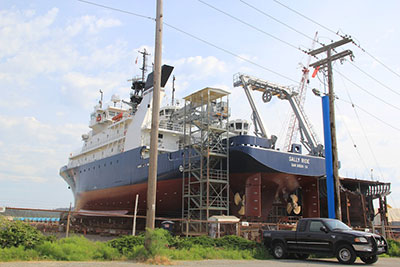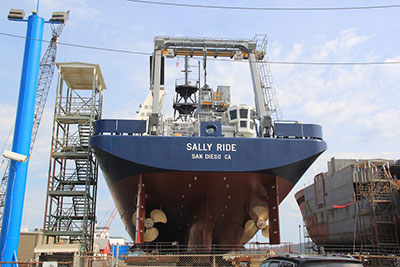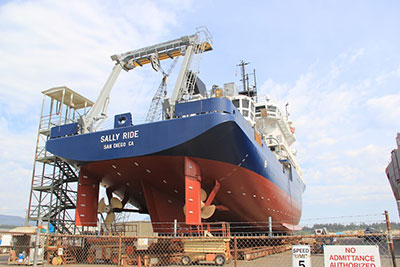In honor of the first American female astronaut, the Office of Naval Research (ONR) recently welcomed the U.S. Navy's newest research vessel — R/V Sally Ride — for ocean science.
The Navy's Superintendent of Shipbuilding received the ship from the Dakota Creek Industries shipyard in Anacortes, Washington, and ONR delivered it to officials from the Scripps Institution of Oceanography. Scripps will operate and maintain the Sally Ride under a charter lease agreement with ONR, which manages the ship on behalf of the Navy.
"The Navy plays a major role in supporting the national research fleet by delivering cutting-edge research vessels like the Sally Ride," said Dr. Frank Herr, head of ONR's Ocean Battlespace Sensing Department. "The Sally Ride is a next-generation research ship that's sure to make new maritime discoveries and scientific breakthroughs, and contribute to the Navy's overall mission."
The Sally Ride takes the place of the recently retired R/V Melville, which Scripps — one of the world's foremost centers for ocean, atmosphere and Earth science research — operated from 1969 to 2014. The Melville sailed over 1.5 million miles, mapped the deepest spot on the planet and made the first observations of deep-ocean volcanic eruptions.
"Thousands of peer-reviewed scientific articles written by scientists who sailed on Melville have significantly advanced our knowledge of the Earth and its oceans," said Program Officer Tim Schnoor, who oversees ONR's research vessel programs.
"The Sally Ride, like her namesake, will support new discoveries in our Earth's oceans over the course of the next 30 or more years," Schnoor continued. "The ship will be outfitted with the latest oceanographic instrumentation to support science at sea and instruction of the next generation of seagoing oceanographers. This work will be essential to gaining a greater understanding of the Earth's changing climate and learning more about the ocean environment in which the Navy operates."
ONR's delivery of the Sally Ride to Scripps continues a tradition that stretches back nearly 70 years. Since the end of World War II, the Navy has provided state-of-the-art research ships to select universities and oceanographic institutions so they could perform scientific studies of the marine environment.
These ships comprise the U.S. Academic Research Fleet, whose research at sea supports Navy and national oceanographic research objectives and trains the next generation of oceanographers.
The 238-foot Sally Ride can sail on cruises as long as 40 days and accommodate both a 20-person crew and up to 24 scientists. The vessel has multi-beam bottom-mapping and ocean current profiling sonars, advanced meteorological sensors and satellite data transmission systems. It also features the latest navigation and ship-positioning systems and a specially designed hull that improves sonar acoustic performance.
The Sally Ride will spend the next month being outfitted with equipment, spare parts, food and other supplies needed for basic ship operations. In August, it will begin "shake-down" cruises, an opportunity to test the ship's capabilities, as it goes from the shipyard in Washington to its ultimate homeport in San Diego, where Scripps is located. Upon arrival there, it will begin a series of science verification cruises to test its installed systems and ensure its readiness for conducting future research missions.
In October, the Sally Ride will begin federally funded research operations.











